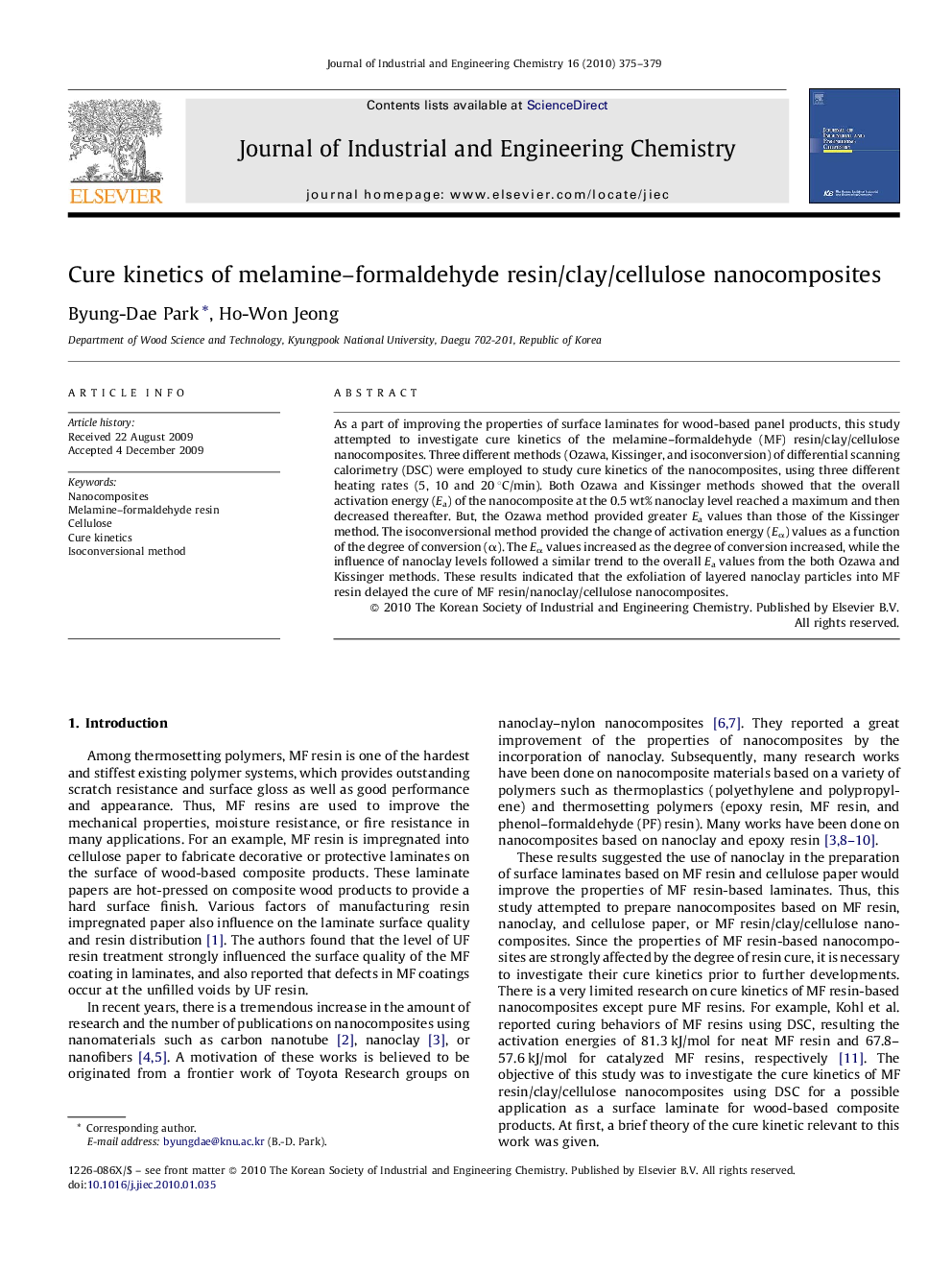| Article ID | Journal | Published Year | Pages | File Type |
|---|---|---|---|---|
| 229251 | Journal of Industrial and Engineering Chemistry | 2010 | 5 Pages |
As a part of improving the properties of surface laminates for wood-based panel products, this study attempted to investigate cure kinetics of the melamine–formaldehyde (MF) resin/clay/cellulose nanocomposites. Three different methods (Ozawa, Kissinger, and isoconversion) of differential scanning calorimetry (DSC) were employed to study cure kinetics of the nanocomposites, using three different heating rates (5, 10 and 20 °C/min). Both Ozawa and Kissinger methods showed that the overall activation energy (Ea) of the nanocomposite at the 0.5 wt% nanoclay level reached a maximum and then decreased thereafter. But, the Ozawa method provided greater Ea values than those of the Kissinger method. The isoconversional method provided the change of activation energy (Eα) values as a function of the degree of conversion (α). The Eα values increased as the degree of conversion increased, while the influence of nanoclay levels followed a similar trend to the overall Ea values from the both Ozawa and Kissinger methods. These results indicated that the exfoliation of layered nanoclay particles into MF resin delayed the cure of MF resin/nanoclay/cellulose nanocomposites.
